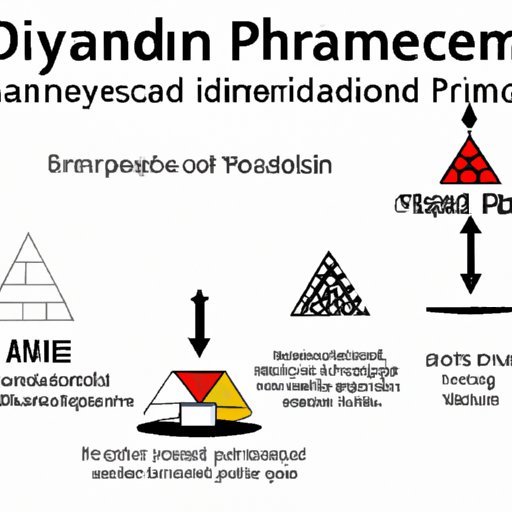Introduction
Extrapyramidal symptoms (EPS) are movement disorders that can occur as a side effect of antipsychotic medications. These drugs treat mental health conditions by affecting neurotransmitters in the brain, but they can also alter dopamine and other neurotransmitters involved in movement control. Understanding the risks and strategies for managing EPS is essential for effective mental health treatment.

Exploring Extrapyramidal Symptoms: Understanding the Movement Disorders Linked to Antipsychotic Medications
EPS encompass several different types of movement disorders, including tremors, akathisia (restlessness), dystonia (muscle spasms), and tardive dyskinesia (involuntary movements of the face and body). These side effects can occur with both typical and atypical antipsychotic medications, and their severity and course can vary significantly depending on the individual.
Antipsychotic medications affect the neurotransmitters that regulate mood, perception, and cognition, including dopamine, serotonin, and norepinephrine. By altering the balance of these chemicals in the brain, these medications can cause changes in muscle control and movement coordination, leading to EPS. Symptoms of EPS can include tremors, muscle stiffness, difficulty with speech or swallowing, and involuntary movements.
Unpacking the Side Effects of Antipsychotic Drugs: A Comprehensive Guide to Extrapyramidal Symptoms
There are several types of antipsychotic medications, including typical (first-generation) and atypical (second-generation) drugs. Typical antipsychotics, such as haloperidol and chlorpromazine, are more likely to cause EPS than atypical antipsychotics, such as risperidone and olanzapine. However, some atypical medications can also cause EPS, especially at higher doses or when used long-term.
Tardive dyskinesia is the most common and potentially irreversible EPS associated with antipsychotic medications. It is estimated to occur in approximately 20% of patients taking antipsychotics for a year or longer. Other forms of EPS, such as dystonia and akathisia, are less common but can significantly impact patient quality of life and adherence to medication.
The Hidden Dangers of Antipsychotic Medications: Understanding the Risks of Extrapyramidal Symptoms
EPS can have several risks and complications associated with them, including cognitive impairment, falls, and medication non-adherence. For example, patients experiencing tremors or muscle stiffness may have difficulty with daily activities and may be at risk for falling. Patients with tardive dyskinesia may experience social stigma or depression, leading to decreased quality of life.
Some patients may be at increased risk of developing EPS due to factors such as age, gender, neurobiological differences, or genetic predisposition. Additionally, medication dosage and duration can play a significant role in the development and persistence of EPS. Providers should monitor patients for early signs of EPS and adjust medications as necessary to minimize risk.
Preventing Extrapyramidal Symptoms: Strategies for Managing the Side Effects of Antipsychotic Medications
There are several strategies for preventing or managing EPS, including medication adjustments, behavioral interventions, and complementary therapies. Medication adjustments can involve reducing the dosage of antipsychotics, switching to a different drug, or adding another medication to target specific EPS symptoms, such as tremors or dyskinesia. Behavioral interventions, such as exercise or psychotherapy, can also help to reduce symptoms of EPS or improve quality of life.
If patients experience significant or severe EPS, medical attention may be necessary to address their symptoms. Treatments for EPS can include anticholinergic medications, which reduce muscle spasms, or botulinum toxin injections to improve dystonic symptoms. Providers should work closely with patients to develop a management plan that minimizes the risks and complications associated with EPS symptoms.
When the Cure Becomes the Problem: Understanding Extrapyramidal Symptoms and How They Affect Mental Health Treatment
Clinicians must balance the benefits of antipsychotic medications with the potential risks of EPS when developing a treatment plan for their patients. For some patients, alternative medications or treatments may be more appropriate, such as psychotherapy or other non-pharmacological interventions. Providers should also educate patients and their families about the risks and benefits of antipsychotic medications and ensure that patients are informed about the potential side effects they may experience.
The Impact of Extrapyramidal Symptoms on Patient Health: A Look at the Relationship Between Antipsychotic Medications and Movement Disorders
Research related to EPS and antipsychotic medications is ongoing, with many studies focused on identifying risk factors and developing more effective treatment strategies. Providers can stay up-to-date on the latest research findings and assess how they may apply to their treatment plans and use of antipsychotic medications. Effective management of EPS can lead to improved quality of life and better treatment outcomes for patients with mental health conditions.
Conclusion
Extrapyramidal symptoms are a complex and potentially debilitating side effect of antipsychotic medications. Providers must understand how these side effects occur, how to prevent and manage them, and the potential risks and complications associated with them. By staying informed about the latest research and collaborating with patients to develop effective management plans, providers can help to reduce the impact of EPS on patient quality of life and mental health treatment outcomes.
